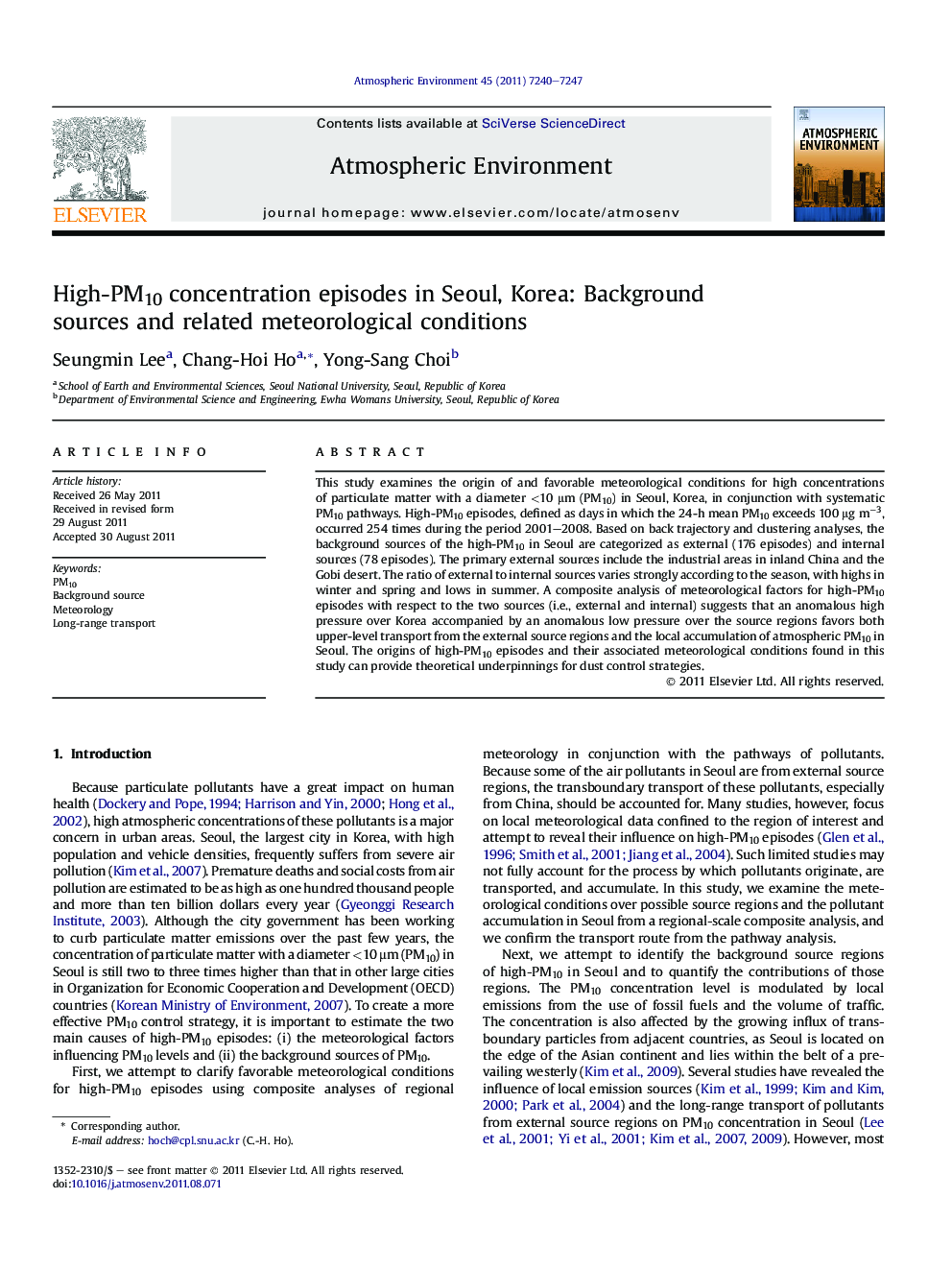| Article ID | Journal | Published Year | Pages | File Type |
|---|---|---|---|---|
| 4439163 | Atmospheric Environment | 2011 | 8 Pages |
This study examines the origin of and favorable meteorological conditions for high concentrations of particulate matter with a diameter <10 μm (PM10) in Seoul, Korea, in conjunction with systematic PM10 pathways. High-PM10 episodes, defined as days in which the 24-h mean PM10 exceeds 100 μg m−3, occurred 254 times during the period 2001–2008. Based on back trajectory and clustering analyses, the background sources of the high-PM10 in Seoul are categorized as external (176 episodes) and internal sources (78 episodes). The primary external sources include the industrial areas in inland China and the Gobi desert. The ratio of external to internal sources varies strongly according to the season, with highs in winter and spring and lows in summer. A composite analysis of meteorological factors for high-PM10 episodes with respect to the two sources (i.e., external and internal) suggests that an anomalous high pressure over Korea accompanied by an anomalous low pressure over the source regions favors both upper-level transport from the external source regions and the local accumulation of atmospheric PM10 in Seoul. The origins of high-PM10 episodes and their associated meteorological conditions found in this study can provide theoretical underpinnings for dust control strategies.
► We examine the origin and the meteorologies of high-PM10 episodes in Seoul, Korea. ► The episodes by external sources are more frequent than those by internal sources. ► Wind and pressure fields determine both the occurrence and the type of episodes.
